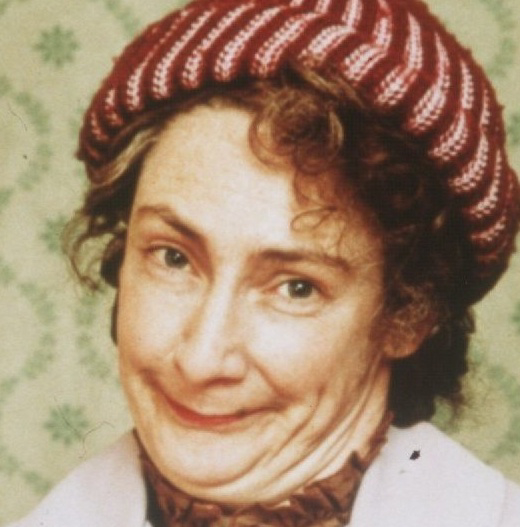I’m half joking. But as a 30-something who used to be very active, I recognize I’m over the hill and my joints sound like pop rocks
Big one is just walk more. If there’s anything near your house that you regularly drive to, start trying to walk there as much as possible.
I have a lot of trouble motivating for the gym and similar self-directed activities, so I find classes or semi-organized sports much easier to do consistently.
Ping pong / table tennis (depending on how seriously you take it) can be a VERY good way to get your steps in. In a 2 hour session I get about 8-10 thousand steps. This is 4 to 5 miles. It is low impact and you can really get a good sweat on.
Wanted to get into this but couldn’t find a place or community close enough to play- settled for Pickleball. Is good fun, plenty of running around in singles.
Today I went for a bike ride. I regret it. Exercise is for chumps. Now, my eyes are dry and they sting. Also I might have asthma.
Mid 30s, I gym, i’ve gymed for years, but now i have prehab warm up exersizes for the big lifts to activate all the supporting muscles. I havent pulled anything in a while so i guess they are working.
I plateued, years ago, i dont need to get any bigger. Instead i do much more rounded workouts.
From what i’ve read, rowing is super low impact and very good for your health from a cardio perspective and a muscle workout perspective. I keep meaning to give it a try, but my routine works for me. Maybe as i get older.
Not sure your workout regimine but I’ve found compound lifts make for shorter workouts and provide the most benefit as we age, particularly squats, deadlifts and rows.
So many people think their back hurts because they’re old when really their back hurts because it’s weak. I started lifting at 47… that was 8+ years ago. I feel so much better and ache so much less in my 50s than I did in my 40s, and surprisingly you can really add muscle and strength even when you’re older, if you want to push yourself. I never anticipated such gains were possible but working hard combined with eating and sleeping well still pays off.
At the moment biking, but i wouldn’t say that stops booboo. I’ve flipped over the bike twice, each time damaging a different wrist (first one was when bike was new and a part wasn’t as tight as it needed to be, so handlebars gave way braking down a hill. Second time anyway overly friendly dog leapt at me. As I lay on the ground it came over and licked me).
I generally still heal kinda well nowadays though, so first wrist is back to normal and second is like 90%, only pain when specific weight and angles are involved.
I want to get back into bouldering too, but that can also give injuries.
Yoga. I started doing some distance running and besides learning to run in the correct zone so I am not maxing out my body everytime I have been doing this Post Run Yoga after most runs. It really helps and allows me to cool down and stretch well. The rest of her videos also rock
I’m in my 40s and I’m really glad I got into martial arts back in my 20s and kept up with it.
I still lift weights, although now it is more about staying toned than getting huge gains. I also try to do cardio at least twice a week.
Injuries are harder to recover from so if something starts to hurt in a bad way I stop and do something else.
Stretch, start slow, build up gradually. Stretch again. Stretch a third.
Rowing and swimming (in a pool, not because the boat capsized). Both are non weight bearing, easy on the joints. Rowing is excellent for your core.
I cannot stress to people how much rowing is actually enjoyable as someone who doesn’t want to “make time” for working out. It’s so relaxing.
Not how I row lol. I’m trying to get the maximum workout in minimal time. I used to put on nature documentaries and go for longer, slower rows but with a kid I need to be done as quickly as possible.
I am 40+ and I just realized the huge importance biomechanics has in choosing a sport or, in my case, the right free weights exercises to do in the gym: if you get someone who ACTUALLY STUDIED Biomechanics in university or anyway an academic-level course, they can take measurements of your limbs and torso and suggest literally the kind of exercise that would have the most return while keeping the chance of injuries at a minimum.
Of course, personal preference/enjoyment will always have to play the most important role in your choices, but when not having strong opinions reducing your chance of injury so that you can be constant in your practice is the best long-term strategy.
Couldn’t that be easily communicated without individual measurements? Like, people with long legs/arms do this, people with ling arms/short legs do this, etc? Generally curious: my partner is 6’4", and this could be useful for him.
There are several tipping points that are worth calculating abd having a proper measurements of the levers in one’s body allows for proper ranking of the possible movements/exercises.
But yeah, there are general rules one can look at, like when you see Phelps with a 2 meters arm aperture that makes him very fit for swimming.
Also people tend to enjoy things more when they get injured less doing them.
Hookers and blow.
My heart is the size of a basketball. I’m going to live forever.
Get a decent set of exercise bands. I have 5lbs all the way up to multiple 100lbs ones. They are relatively cheap, light and highly mobile.
How do you even get back into it… So hard
ITT: One half providing helpful insight into healthy physical activities, the other half total assholes ripping into this person for not being a jock.
Some people have been living sedantary life styles, the reasons for such can range from lack of interest to mental illness. Some people get a good dopamine hit from exercise. For others, exercise is a pretty miserable experience.
If someone is reaching out to seek advice on how to improve their lives, lend a helping hand. Please don’t be an asshole.








